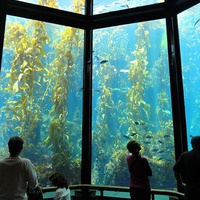Australia’s Other Great Reef Is Also Screwed
The Atlantic, 08 Jul 2016.
While the world panics about the Great Barrier Reef, an even larger and more valuable habitat is collapsing under our noses, says The Atlantic. Read how marine heat waves are devastating kelp forests in Australia's Great Southern Reef, including an interview with Redmap founder Gretta Pecl!
Imagine arriving at a region famed for its forests—the Pyrenees or the Rockies, perhaps—and discovering that all the trees had vanished. Where just a few years ago there were trunks and leaves, now there is only moss. That’s how Thomas Wernberg and Scott Bennett felt in 2013, when they dropped into the waters of Kalbarri, halfway up the western coast of Australia.
They last dived the area in 2010. Then, as in the previous decade, they had swum among vast forests of kelp—a tagliatelle-like seaweed whose meter-tall fronds shelter lush communities of marine life. But just three years later, the kelps had disappeared. The duo searched for days and found no traces of them. They only saw other kinds of seaweed, growing in thin, patchy, and low-lying lawns. “We thought we were in the wrong spot,” says Bennett. “It was like someone had bulldozed the reef. It was like a moonscape underwater—scungy, brown, and empty.”
The culprit—surprise, surprise—is climate change. The waters near western Australia were already among the fastest-warming regions in the oceans before being pummeled by a recent series of extreme heat waves. In the summer of 2011, temperatures rose to highs not seen in 215 years of records, highs far beyond what kelps, which prefer milder conditions, can tolerate. As a result, the kelp forests were destroyed.
Read more and the full story in The Atlantic.












